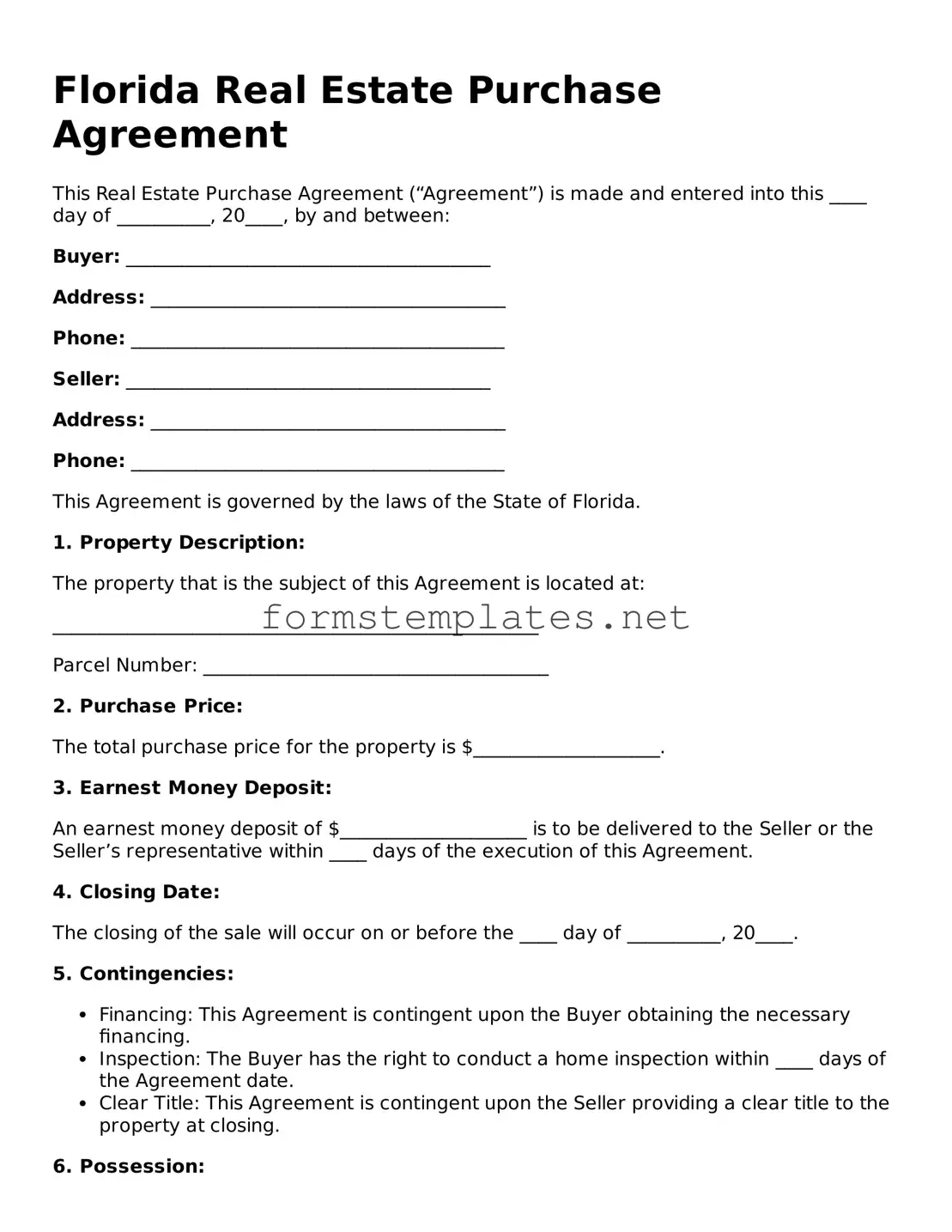Florida Real Estate Purchase Agreement
This Real Estate Purchase Agreement (“Agreement”) is made and entered into this ____ day of __________, 20____, by and between:
Buyer: _______________________________________
Address: ______________________________________
Phone: ________________________________________
Seller: _______________________________________
Address: ______________________________________
Phone: ________________________________________
This Agreement is governed by the laws of the State of Florida.
1. Property Description:
The property that is the subject of this Agreement is located at:
____________________________________________________
Parcel Number: _____________________________________
2. Purchase Price:
The total purchase price for the property is $____________________.
3. Earnest Money Deposit:
An earnest money deposit of $____________________ is to be delivered to the Seller or the Seller’s representative within ____ days of the execution of this Agreement.
4. Closing Date:
The closing of the sale will occur on or before the ____ day of __________, 20____.
5. Contingencies:
- Financing: This Agreement is contingent upon the Buyer obtaining the necessary financing.
- Inspection: The Buyer has the right to conduct a home inspection within ____ days of the Agreement date.
- Clear Title: This Agreement is contingent upon the Seller providing a clear title to the property at closing.
6. Possession:
The Buyer shall take possession of the property on or after the closing date.
7. Default:
In the event of default by the Buyer or Seller, the non-defaulting party may pursue the appropriate legal remedies.
8. Governing Law:
This Agreement shall be governed by and construed in accordance with the laws of the State of Florida.
9. Signatures:
IN WITNESS WHEREOF, the parties hereto have executed this Agreement as of the day and year first above written.
Buyer: _______________________________ Date: ______________
Seller: ______________________________ Date: ______________
This document serves as a template and should be reviewed by a legal professional for compliance with local laws and regulations.
